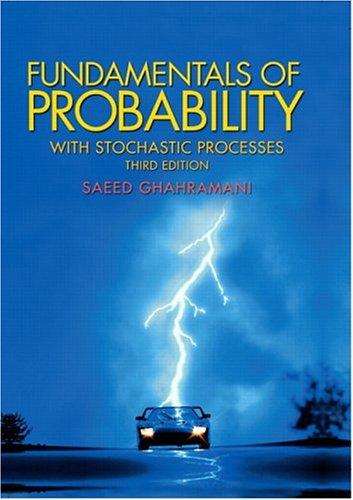33. An urn contains n balls whose colors, red or blue, are equally probable. 4 For example,...
Question:
33. An urn contains n balls whose colors, red or blue, are equally probable. 4 For example, the probability that all of the balls are red is (1/2)n. 5 If in drawing k balls from the urn, successively with replacement and randomly, no red balls appear, what is the probability that the urn contains no red balls? Hint: Use Bayes’ theorem.
Fantastic news! We've Found the answer you've been seeking!
Step by Step Answer:
Related Book For 

Fundamentals Of Probability With Stochastic Processes
ISBN: 9780131453401
3rd Edition
Authors: Saeed Ghahramani
Question Posted:






